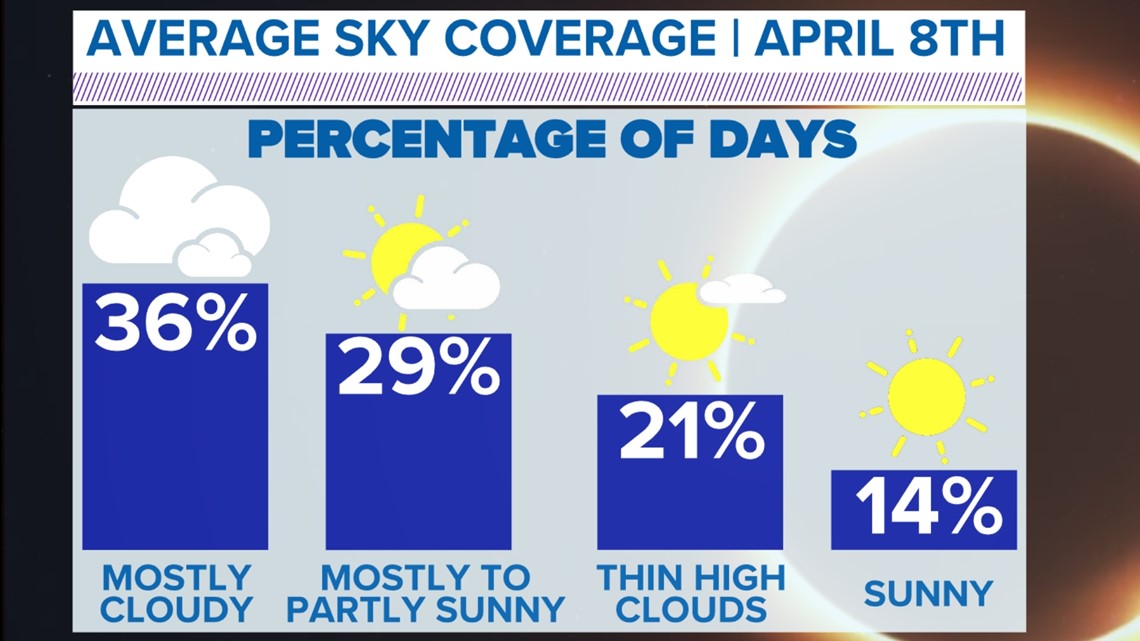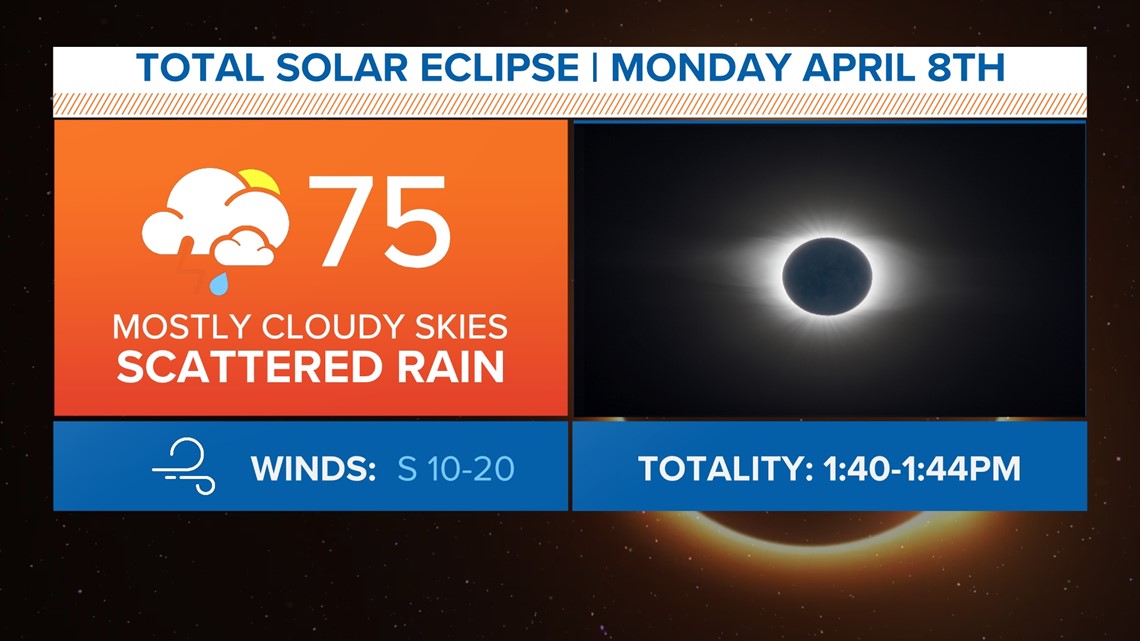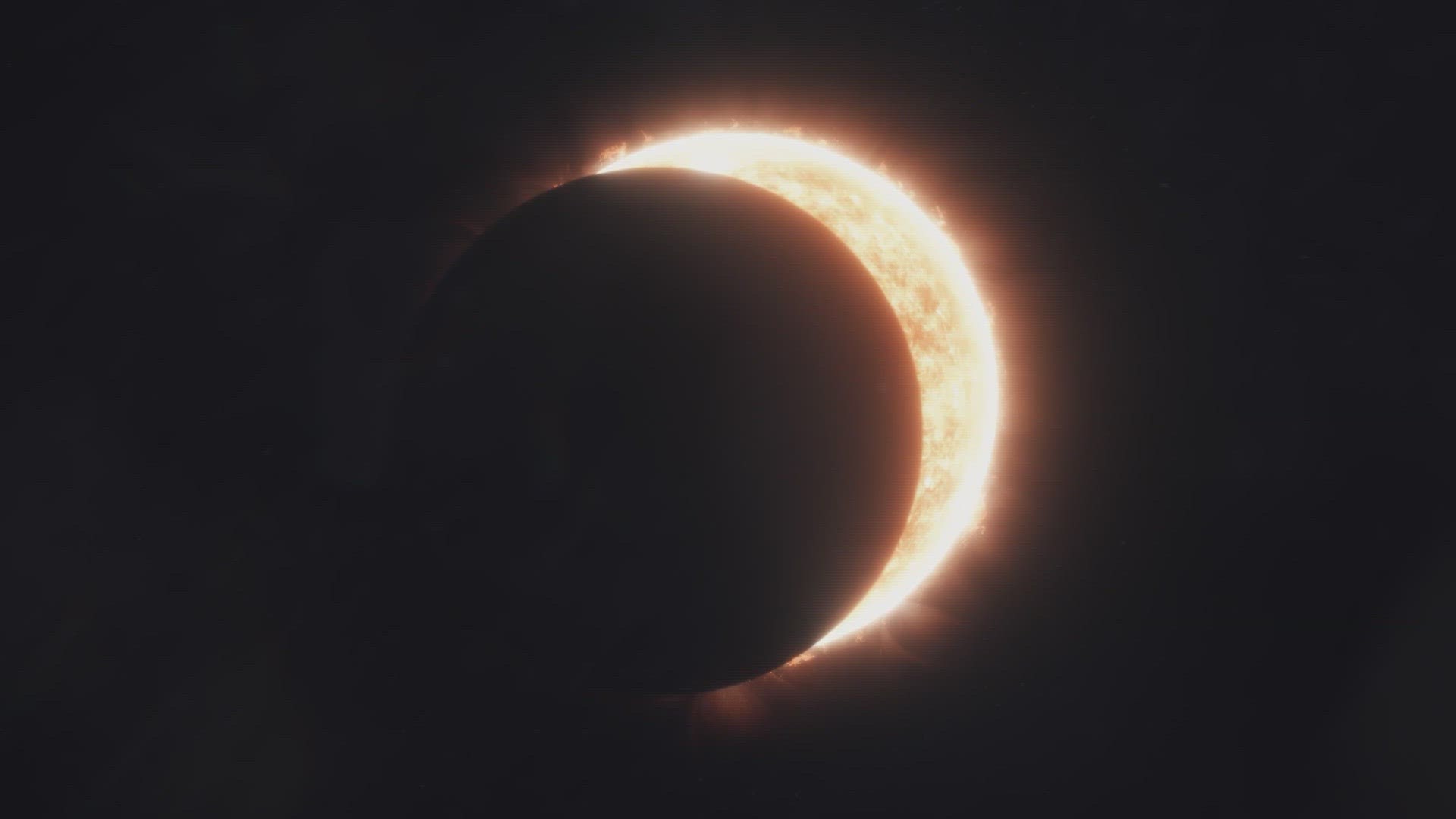DALLAS — The total solar eclipse happening April 8 will be the celestial event of the century. The phenomena has already captivated humanity with its rare occurrence, wide path and time in totality along the centerline.
Occurring when the moon passes between the Earth and the Sun, casting a shadow on the Earth's surface, it is set to draw crowds of enthusiastic spectators who eagerly await the breathtaking moment when day turns into an eerie twilight and the Sun's corona becomes visible.
However, the experience of witnessing the total solar eclipse will be greatly-influenced by weather conditions, particularly the presence of clouds. While clear skies are ideal for observing this astronomical spectacle, the fact that it is spring in Texas means that clouds may obscure the view, leaving observers disappointed and wondering what happens when clouds interfere during a total solar eclipse.
Let’s first look at historical cloud data for April 8.
Since 2000, the sky on April 8 typically has clouds in the sky.
In the last 23 years, 36% of those days were mostly-cloudy, and 29% were mostly-to-partly-sunny. That means at least one third of the the time, April 8 is generally cloudy, making for less-than-ideal total eclipse viewing conditions. Over 80% of years had clouds in the sky of some kind. It is fairly rare for an April day to have nothing but sunshine overhead.


The odds and the current weather pattern are not in our favor.
When clouds block the Sun during a total solar eclipse, several effects are observed:
Diminished Visibility: ANY cloud cover will impact the view of the solar eclipse. The type of cloud will play a role in this.
High, thin clouds can block the view slightly, but these types of clouds are usually transparent enough to allow for much of the eclipse to be visible. Although, viewers may not be able to see the sun's corona.
Low clouds like stratus or cumulus will make it a bit more difficult. We generally see these types of clouds this time of the year, especially in the morning. Instead of witnessing the dramatic change that comes with the moon blocking out the sun, spectators may only experience the darkening of the clouds. This means missing out of the sight of the Sun’s corona during totality.
Even with cloud cover, it’ll still look darker for the duration of the eclipse. The scene just won’t be as dramatic. Animals and plants will still notice the difference in the lack of sun.
Weather Impacts: The total solar eclipse offers a unique opportunity to witness a temperature drop due to the lack of solar radiation. On a clear day with low humidity and light winds, a total solar eclipse lasting close to four minutes could equal a temperature drop of nearly 8 degrees. However, with the presence of clouds (and higher humidity), temperatures may only drop a degree. This is because cloud cover acts as a blanket to keep heat from escaping into space.
Current April 8 Eclipse Forecast:
The current weather pattern for April 8 favors an active weather pattern. At a minimum, clouds will be around the area on that day. The chance for clear skies is very low at this point.
However, how thick the clouds are remains in question and there also could be breaks in those clouds.
Since the pattern looks active, it is also possible for some rain and storms to be around the area as well.
We'll continue to fine-tune the forecast as we get closer as things could shift a bit.


More Texas headlines:

